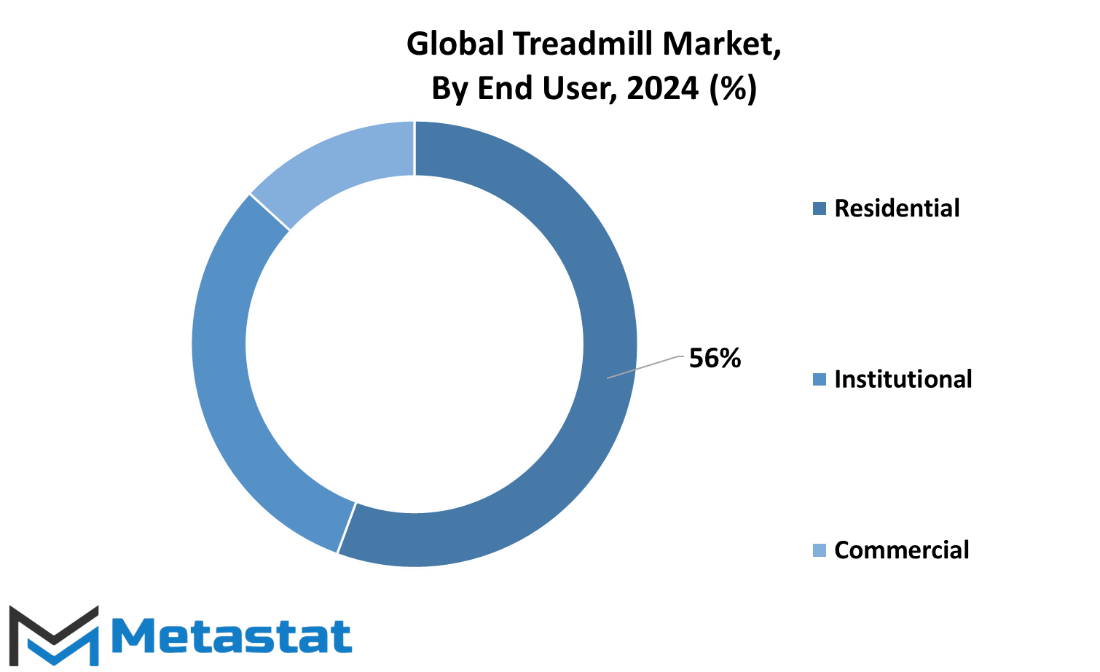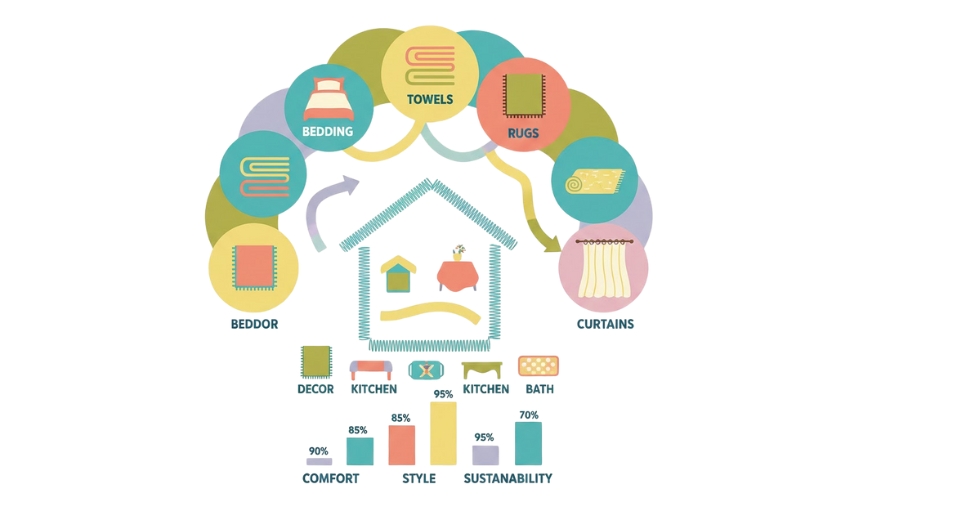MARKET OVERVIEW
The Global Treadmill market stands as an ecosystem where manufacturers, retailers, and consumers converge to shape the landscape of fitness equipment. It mirrors a vibrant tapestry woven with the threads of innovation, catering to the ever-changing demands of individuals pursuing an active lifestyle. In this marketplace, a plethora of treadmills, spanning from manual to motorized, find their place, offering diverse features and designs that resonate with the preferences of fitness enthusiasts worldwide.
Within this expansive marketplace, competition thrives as companies strive to carve out their niche, introducing cutting-edge technologies and ergonomic designs. The global Treadmill market is not merely a transactional space; it is an arena where trends emerge and dissipate, driven by the collective pulse of consumer preferences and advancements in fitness science.
Customers, seeking to enhance their cardiovascular health and embrace the convenience of home workouts, navigate the vast options presented by the Global Treadmill market. From compact, foldable models tailored for urban living to robust, feature-rich machines designed for professional athletes, the market offers a spectrum of choices that reflect the diversity of fitness goals and lifestyles.
Retail channels, both traditional and online, play a crucial role in connecting consumers with the right treadmill for their needs. The interplay between manufacturers, distributors, and end-users creates a dynamic marketplace where information and choices flow freely, empowering individuals to make informed decisions about their fitness journey.
Despite its global reach, the treadmill market remains deeply rooted in local contexts, adapting to cultural preferences, living spaces, and economic factors. This intricate dance between global trends and localized adaptations shapes the trajectory of the treadmill market, ensuring its relevance across diverse societies.
The Global Treadmill market is more than a transactional space; it reflects our pursuit of a healthier and more active lifestyle. As manufacturers innovate and consumers evolve in their fitness aspirations, this marketplace continues to be a dynamic canvas where the colors of technology, design, and individual preferences blend to create a vibrant tapestry of wellness.
Global Treadmill market is estimated to reach $5,912.0 Million by 2031; growing at a CAGR of 5.5% from 2024 to 2031.

GROWTH FACTORS
The global treadmill market experiences growth driven by various factors. Key drivers include rising health consciousness and an increasing focus on fitness. However, challenges like economic fluctuations and supply chain disruptions may hinder market growth. Despite these hurdles, emerging technologies and innovations present lucrative opportunities for the market in the foreseeable future. The demand for fitness equipment, including treadmills, is propelled by a growing awareness of the importance of a healthy lifestyle. People are increasingly investing in fitness solutions, contributing significantly to the market’s upward trajectory. Nonetheless, economic uncertainties and disruptions in the supply chain pose potential threats to sustained growth. Manufacturers and stakeholders need to navigate these challenges strategically. On a positive note, continuous advancements in technology and the introduction of innovative features in treadmills create avenues for market expansion.
As consumers seek more personalized and interactive fitness experiences, the integration of smart technologies into treadmills becomes a crucial factor. This trend not only enhances user engagement but also opens doors to new market segments. While the market faces obstacles, the overall outlook remains optimistic. Adapting to changing consumer preferences and embracing technological advancements will be key for sustained success in the global treadmill market.
MARKET SEGMENTATION
By End Use
The Global Treadmill market is categorized based on its end use, with further divisions into Residential, Institutional, and Commercial applications. This segmentation allows us to understand the diverse utilization of treadmills across different settings.
Residential usage refers to the treadmill's presence within households. Many individuals opt for home-based fitness solutions, and treadmills find their place as convenient exercise equipment for personal use. This category caters to those seeking a fitness option within the comfort of their homes, emphasizing accessibility and personal well-being.
Institutional application involves the incorporation of treadmills in various non-commercial settings, such as educational institutions, healthcare facilities, or community centers. Treadmills in these environments contribute to promoting a healthy lifestyle and can be utilized for wellness programs, physical therapy, or educational purposes.
The Commercial segment encompasses the use of treadmills in fitness centers, gyms, and other commercial establishments. These settings focus on providing fitness services to a broader audience, attracting individuals seeking professional guidance and a more dynamic workout environment. Commercial-grade treadmills are designed to withstand heavy usage and are equipped with features that cater to diverse fitness needs.
From personal well-being at home to institutional health initiatives and the bustling atmosphere of commercial fitness centers, treadmills play a pivotal role in catering to a wide array of fitness preferences and requirements.

By Distribution Channel
The global treadmill market is categorized based on its distribution channels, with significant segments shaping the industry landscape in 2022. The Specialty Store segment held a value of 706.8 USD Million, highlighting its substantial presence and impact. Following closely, the Franchise Store segment contributed significantly with a value of 520.3 USD Million, emphasizing its noteworthy market position.
Online stores emerged as a pivotal distribution channel, commanding a substantial market share with a valuation of 1956.5 USD Million in 2022. This underlines the growing influence and preference for online platforms in the treadmill market. Additionally, the Others segment played a significant role, being valued at 516.8 USD Million, contributing to the diverse distribution channels that consumers engage with.
These distinct segments within the distribution channels of the treadmill market showcase a dynamic landscape with various channels playing integral roles. The Specialty Store, Franchise Store, Online store, and Others collectively depict the multifaceted nature of consumer choices and market preferences, reflecting a nuanced and evolving market scenario.
REGIONAL ANALYSIS
The global Treadmill market is analyzed regionally, considering North America, Europe, and Asia Pacific. This geographical division provides insights into market trends and dynamics specific to each region. Understanding these regional variations is crucial for comprehending the broader market.
In North America, the Treadmill market exhibits distinctive characteristics influenced by local preferences and lifestyle. Consumer behavior and fitness trends shape the demand for treadmills, reflecting the region's unique market dynamics.
Europe, as another key market region, showcases its own set of factors impacting the Treadmill market. Varied cultural attitudes towards fitness and health contribute to the diversity in treadmill usage patterns across European countries. Analyzing these nuances aids in forming a comprehensive perspective on the market's regional intricacies.
Moving to Asia-Pacific, a region known for its diverse economies and demographics, the Treadmill market experiences yet another dimension. Factors such as the rising awareness of health and fitness, coupled with economic growth, play a significant role in shaping the demand for treadmills in this part of the world.
Examining the Treadmill market through a regional lens enables a nuanced understanding of how cultural, economic, and social factors interact to influence consumer choices. As we delve into the regional analysis, it becomes evident that these distinctive features contribute to the overall tapestry of the global Treadmill market.
COMPETITIVE PLAYERS
The global treadmill market is driven by various key players within the industry. Notable names include ICON Health & Fitness Inc., Johnson Health Tech Co Ltd., TECHNOGYM S.P.A., Life Fitness Inc., Nautilus Inc., Landice Inc., TRUE Health Tech Ltd Co., TrueForm, Woodway, Nordic Track, ProForm, Sole Fitness, Bowflex, Horizon Fitness, and Precor.
These companies play a significant role in shaping the treadmill market landscape. ICON Health & Fitness Inc., for instance, is known for its innovative fitness equipment, while Johnson Health Tech Co Ltd. has made strides in the development of quality treadmills. TECHNOGYM S.P.A. is recognized for its commitment to cutting-edge fitness solutions, and Life Fitness Inc. is a prominent player known for its wide range of fitness equipment.
Nautilus Inc., Landice Inc., and TRUE Health Tech Ltd Co. contribute to the market with their respective offerings, each bringing unique features and capabilities. TrueForm, Woodway, Nordic Track, ProForm, Sole Fitness, Bowflex, Horizon Fitness, and Precor also add diversity to the industry, catering to different consumer preferences.
In the competitive landscape of the treadmill market, these key players continuously strive to enhance product offerings, ensuring a dynamic and evolving market. Their collective efforts contribute to the growth and innovation observed within the industry, providing consumers with a variety of options to meet their fitness needs.
Treadmill Market Key Segments:
By End Use
- Residential
- Institutional
- Commercial
By Distribution Channel
- Specialty Store
- Franchise Store
- Online store
- Others
Key Global Treadmill Industry Players
- ICON Health & Fitness Inc.
- Johnson Health Tech Co Ltd.
- TECHNOGYM S.P.A.
- Life Fitness Inc.
- Nautilus Inc.
- Landice Inc.
- TRUE Health Tech Ltd Co.
- TrueForm
- Woodway
- Nordic Track
- ProForm
- Sole Fitness
- Bowflex
- Horizon Fitness
- Precor
WHAT REPORT PROVIDES
- Full in-depth analysis of the parent Industry
- Important changes in market and its dynamics
- Segmentation details of the market
- Former, on-going, and projected market analysis in terms of volume and value
- Assessment of niche industry developments
- Market share analysis
- Key strategies of major players
- Emerging segments and regional growth potential








 US: +1-(714)-364-8383
US: +1-(714)-364-8383






